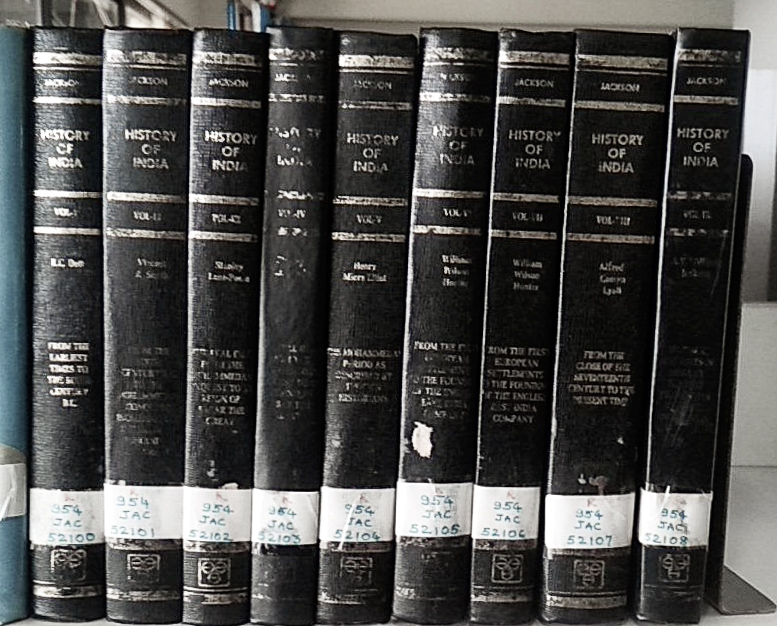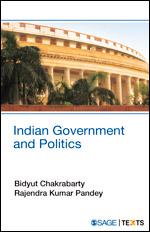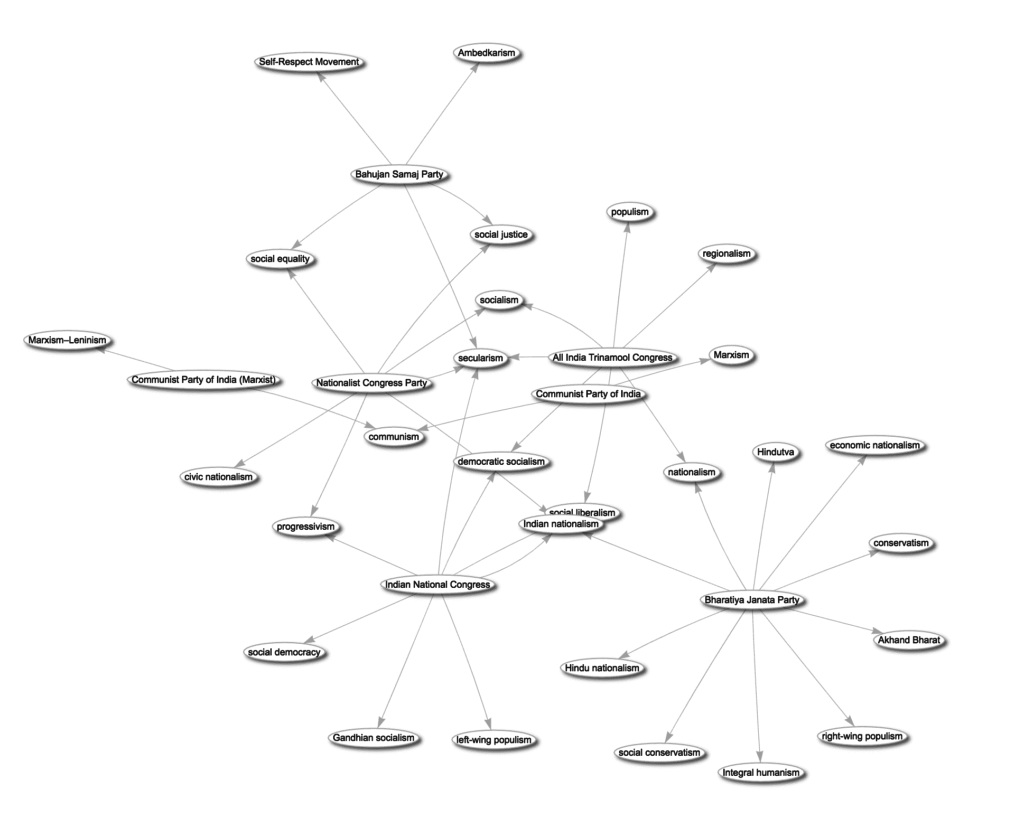
It would be so much fun to add all the information here to Wikidata, Wikisource and Commons 😃

It would be so much fun to add all the information here to Wikidata, Wikisource and Commons 😃

I didn’t pay attention to Civics class in school, so it was time I revisited the syllabus and found out how the Indian government worked. This interest was triggered by the Aadhaar case, and also by my attempt to understand where the ISRO WikiProject lies in the larger Indian government system.
I decided to get Indian Government and Politics from SAGE publishing because I read somewhere that it was a textbook for UPSC exams (of which I learnt more in the book). I supplemented my reading with an entertaining YouTube series called Consti-tuition hosted by Meghnad. I even got a subscription to Newslaundry to access the bonus content.
The video series and the book covered what the constitution said, and what reality is like. This was important for me as it helped me learn where the system fails and what kind of structures are made ad-hoc to deal with it. As Dan Kaminsky points out, this part of my learning will go on for much longer, maybe forever.
I’m increasingly thinking that every functioning system has two forms: The abstraction that outsiders are led to believe, and the reality that insiders actually and carefully operate.
You don’t incrementally learn a system. You eventually unlearn its necessary lies.
— Dan Kaminsky (@dakami) January 17, 2018

It also gave me a lot of new WikiData projects ideas. The first one being to visualize the national political parties and their ideologies. I’ll be working on more as time permits. Click image below for the Wikidata query.
This book was a good first step to learn the system and it’s lies. It seems pretty complex, and I know I’ve only scratched the surface, but at least I’ve begun to understand something… the me in school would have understood nothing, even if he did pay attention.
After I understood how Wikidata worked and had begun contributing to it, I thought it was the solution to everything. It made complete sense — a federated, linked, semantic database of everything. What else would anyone need? It would be the hammer for every nail.
Excited, I began showing it to my friends and family. With each demo, I realized that Wikidata is a difficult hammer to use. A friend pointed out the obvious, “Interesting… but how will people use it? No one is going to learn SPARQL”. Even changing the name of the painter in the “show me paintings of Amrita Sher-Gil query” isn’t trivial. And working with Wikidata’s Q-id isn’t straightforward either.

The only other way to query this immense dataset is to wait for the big tech companies to eat up all this CC-O data. Siri, Alexa, and Google Assistant will become smarter with it, but they’ll remain a closed ecosystem that often harm the projects they benefit from. On the other hand however, the Google Art Project has helped Commons. Still, it too remains a system of closed collection and curation, with no room for correction or contribution.

While we wait for an open source Virtual Interactive Kinetic Intelligence (VIKI), I wonder what an open virtual museum would be like — a Wikiseum! A VR experience on the open web using open data. Paintings from museums across the world, and a museum guide who speaks your language.
All this is technologically already possible — Wikidata has numerous statements on paintings and museums which is only going to increase with structured data on Commons. Commons itself has scans of many paintings, and Wikipedia has detailed information about paintings, their artists, and the museums they are in.
All that is left to do is some plumbing and a UI.
TL;DR: Notes on how I’ve been organizing pages for my Wikidata WikiProjects. These are for my future self but could benefit others too. Suggestions welcome!
NOTE: This is about topic related projects, community WikiProjects like WikiProject India would have different needs.
In the last six months, I have created three Wikidata Wikiprojects with different sizes, depth, and completeness. After rounds of trial and error, I have learned of useful Templates and ways of organizing these pages. Having a good WikiProject page is like having good code documentation, it helps me remember what I wanted to do even when I come back after a month of being inactive. Here are my building blocks:
Explain the domain of the project using the P and Q templates. If there are sub-pages with tables (more on this later) I try to list them here, but I am not yet sure if this is a good idea. See the intro section of the CJI project for an example.
Hoping the reader scrolls at least to the second section, I put up queries and visualizations to create some interest. Using the SPARQL template I show the main query of the project, collecting all the entities of the project’s domain. I use Cot and Cob for all subsequent queries so that they don’t take up too much vertical space.
I try to set an interesting defaultView for the queries so that people can visualize the data, but I haven’t used images, screenshots, or interactive charts yet. Those would surely get more attention, but images will go out of date, and I still haven’t learned Vega. Should explore SparqlCharts too.
While the first two sections are for people visiting your project, the next sections are for those doing the work. The properties section should define all the details you want to add to the entities. If there are too many, you might want to break them down to Core and Extras to ease the workload.
It took me a while to learn and understand the features of List of Properties/Row. Customize the table using description, example-subject, example-property arguments. I used the contextualized-qualifier for the first time in the core properties of the CJI project.
A table of all the entities and properties of the project is useful in doing and monitoring the work. I prefer to keep it on a sub-page as its usually too large for the project page. See Delhi Metro/Stations for an example.
The Wikidata list template gives you a table based on a SPARQL query that gets updated by a bot every day. This has been very helpful for me, I watchlist the page with this table and I get an update if any property of any object that I care about has changed, whether or not it was direct, and whether or not that object itself is on my watchlist. The template also lets you see labels in multiple languages, but unfortunately not descriptions.
At the end, I have miscellaneous sections to document helpful resources, questions, ideas, or anything else that doesn’t have a place. Often bullet points here become properties to be added, or citations used on the objects.
In the case of WikiProject Delhi Metro, which is the largest WikiProject out of the three I also have a section to help get contributors started, and a userbox too.
For both Delhi Metro and ISRO I have sections for broad topics like launch vehicles or stations, and sections for queries, properties, and resources within them.